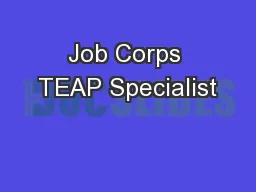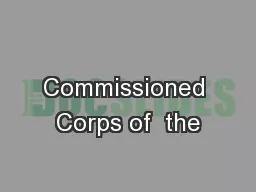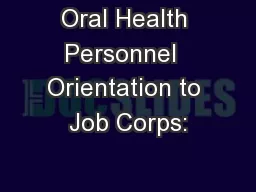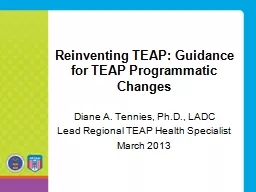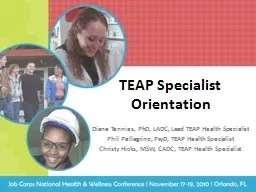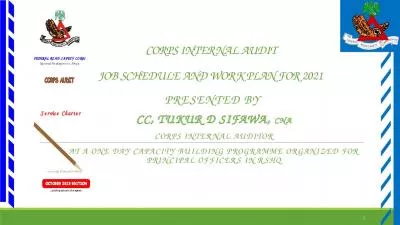PPT-Job Corps TEAP Specialist
Author : phoebe-click | Published Date : 2018-11-01
Orientation Diane A Tennies PhD LADC LeadRegional TEAP Health Specialist Job Corps Mission As a national primarily residential training program Job Corps mission
Presentation Embed Code
Download Presentation
Download Presentation The PPT/PDF document "Job Corps TEAP Specialist" is the property of its rightful owner. Permission is granted to download and print the materials on this website for personal, non-commercial use only, and to display it on your personal computer provided you do not modify the materials and that you retain all copyright notices contained in the materials. By downloading content from our website, you accept the terms of this agreement.
Job Corps TEAP Specialist: Transcript
Download Rules Of Document
"Job Corps TEAP Specialist"The content belongs to its owner. You may download and print it for personal use, without modification, and keep all copyright notices. By downloading, you agree to these terms.
Related Documents

